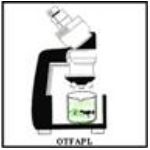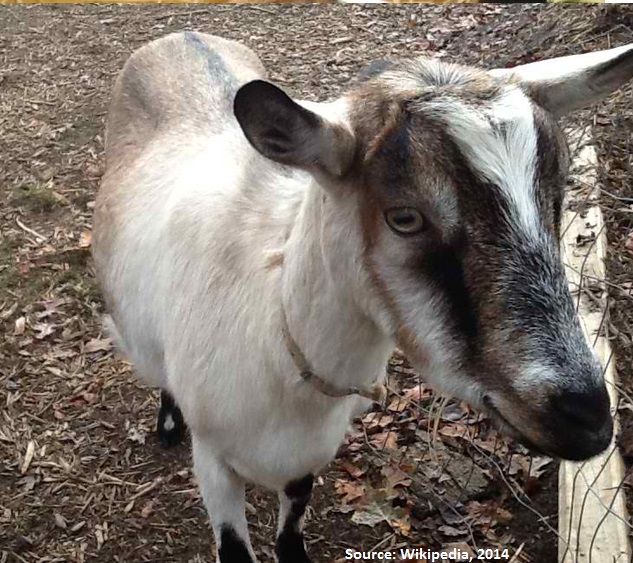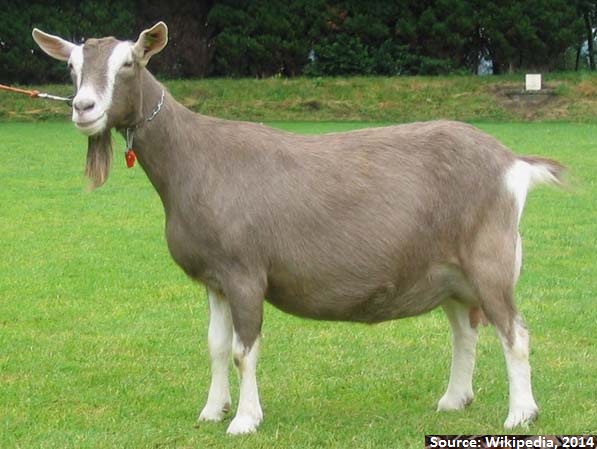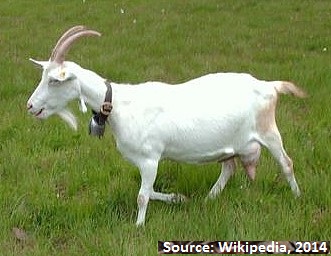
Lecture Slides 4.1.2 - Goat Production - Breeds in the Caribbean
Lecture Slides
In this section, we cover:
4.1.2 Breeds of Goat in the Caribbean - we cover the 4 main breeds of goats found in the Caribbean; Anglo-Nubian, Alpine, Toggenburg and Saanen.
4.1.2 Breeds of Goat in the Caribbean - we cover the 4 main breeds of goats found in the Caribbean; Anglo-Nubian, Alpine, Toggenburg and Saanen.
4.1.2 Breeds of Goats in the Caribbean
Anglo-Nubian
The Anglo-Nubian is suited to semi-tropical environments. It was produced by crossing Indian and Sudanese Nubian goats with indigenous British goats at the turn of the century. The breed also contains some Swiss blood. Animals have a distinctive Roman nose and large pendulous ears. There are of a variety of colours including Black, Mahogany, White and Cream. The breed is big framed, females averaging over 70kg and males more than 100kg. Though not as high milk producers as several other breeds, the milk is of high quality in terms of fat and protein.
Picture of an Anglo-Nubian Goat

Alpine
The type most commonly found in the region, the Alpine is a mix of various European breeds, (the French Alpine is the most popular). Other types are the Swiss, Rock and British Alpine. The breed has colour combinations of black and white through shades of cream and fawn to reddish brown. Its ears are erect and the animal has a long slender neck. Milk production ranges between 675 and 900 kg over a lactation period of 250 - 305 days. Does should weigh upwards of 55 kg. and bucks 77 kg and upwards.
Picture of an Alpine Goat


Toggenburg
This breed originated in the Toggenburg valley of Switzerland and is the oldest recognised breed of dairy goat. It has a light brown colour shading, off white on the belly, legs, inside of thighs and under the tail. There is also a white bar running along each side of the face from the ears to the muzzle. The breed has the potential to produce 700 - 900 kg of milk per lactation and mature weights of bucks and does are in excess of 75 and 55 kg respectively.
Picture of a Toggenburg Goat


Saanen
As with the Toggenburg, the Saanen derives its name from a valley in Switzerland. It is the largest of dairy breeds. Mature does may weigh in excess of 64 kg and bucks 85 kg. Saanens can produce over 1000 kg of milk in a single lactation of between 275 to 300 days. The animals are pure white with erect ears and may or may not have dark spots on the skin and udder. Other Breeds of Tropical Goats
Picture of a Saanen Goat


Other breeds which may not be popular in the Caribbean exists. These are described in Steele (1996), but have not been presented here as they are of little immediate practical importance to us in the Caribbean and Latin America.
Schematics of a generalized ruminant digestive system is shown below. back to top